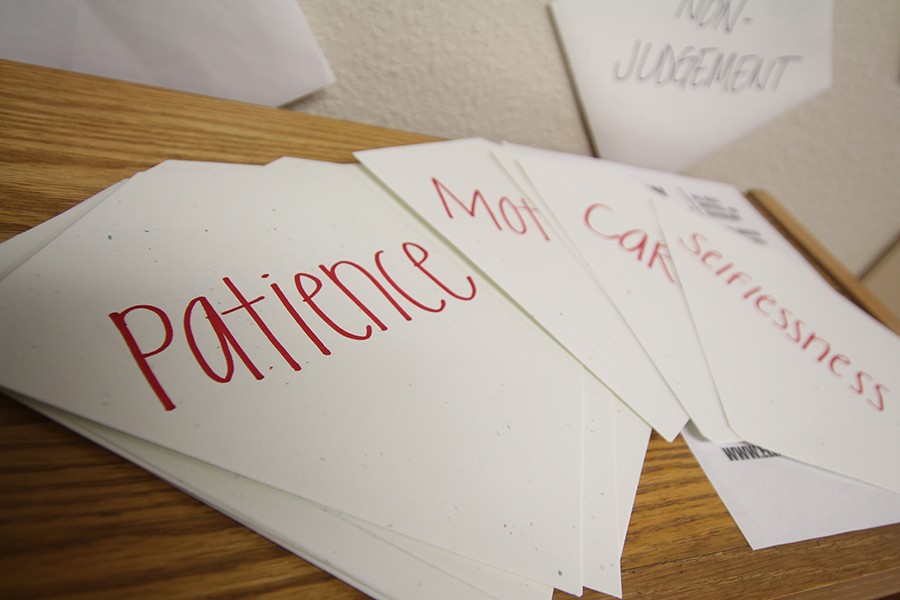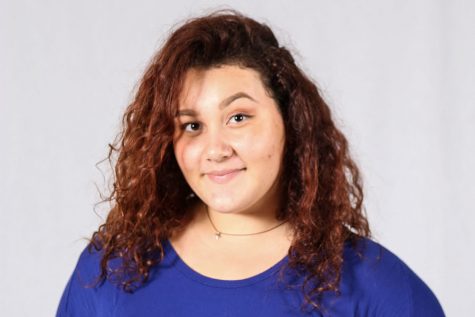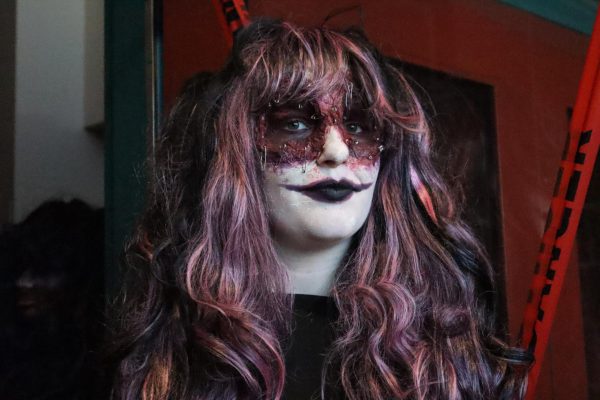New Restorative Justice program resolves conflict
Participants create diamond shapes out of paper and write their values inside. After circles the diamonds are then hung up on the walls around the class.
November 20, 2015
After years of having constant struggles at home, sophomore Dominick Rodriguez says he has found peace.
Rodriguez used to have constant conflicts at home with his mother that took a toll on his emotions and affected his academic performance at school.
“[Without the Restorative Justice program] I would’ve still been in the same place right now as before like fighting with
my mom, but now we’re doing good and doing a lot better,” he said. “We’re both going to people and trying to change for the better.”
Rodriguez’s story would not have been possible without the implementation of the Restorative Justice program at
Akins this year. The focus of the program is to ad- dress discipline problems in a way that “heals” the student rather than just punish them when a behavior problem arises, said coordinator Eloise Sepeda.
Restorative Justice often uses listening circles as a means to allow classes or sometimes the affected par- ties of a certain incident — including the accused rule breaker, teachers and administrator and other students — to share with the whole group about ways to settle the dispute that took place. There are multiple circles that fit every sitution such as family, classroom, and conflict resolution circles. A non-profit agency called Life Anew was hired to help the campus implement these practices, which have been used in other schools or even neighborhoods to help promote community peace.
“We’ve had a great reaction to (restorative justice) we had teachers who were very excited and very creative about how they did circles in their classrooms and new relationships that were being built amongst the students and teachers,” Sepeda said. “So I think that the atmosphere of the school was really positive because of the community building that our teachers and student were experiencing.”
The focus of Restorative Justice is to empower students to make positive changes in their lives instead of automatically suspending them for rule infractions.
“Instead of removing our students from the classroom or from our school community by placing students in In-School Suspension or home suspension or alternative school, they are given options to repair harm and make wrongs right so that they can stay in class and gain the education that they’re here to gain,” she said.
Restorative Justice programs are becoming more prominent across the country as an attempt to address trends in which high rates of certain types of students are punished by suspension than other groups. According to the Penn GSE Center for the Study of Race and Equality in Education, 22.1 percent of black students in Austin ISD get suspended more often than any other race.
Administrators at Akins hope that the program will help to lower suspension rates and keep students in classes instead of sending them home without repairing the harm they have done to their fellow students, classes, teachers nd possibly their homelife and communities.
Restorative Justice is not without its critics. Some teachers have felt that some students are abusing their access to the Restorative Justice coordinators. Some others said they believe the program gives too much power to the students to abuse the system.
Anthony Bromberg said that Restorative Justice is a messy process but it’s a relationship that you’re going to build with the student so it’s worth it.
“For the second 6 weeks, I think the program so far is going really fabulously,” Bromberg said. “There are those moments where we’re unsure [about restorative justice] and we need to learn together and talk together to work out some bumps in the road.”







